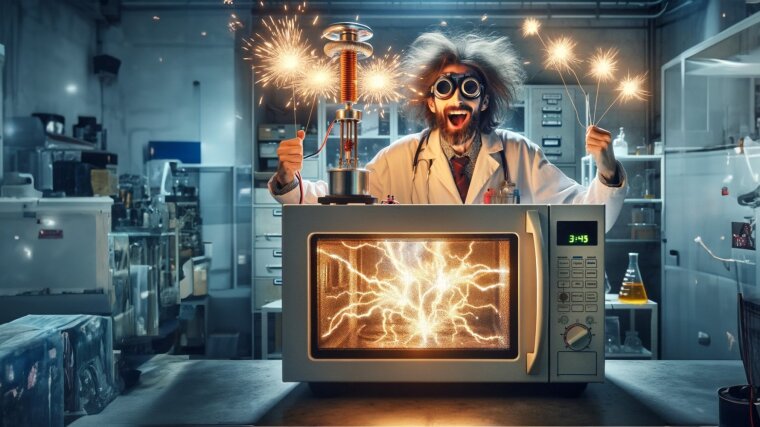
- Light
- Forschung
Published:
Our researchers will be opening their doors and offering fascinating insights into modern physics - from gravitational waves and nanotechnology to laser research. In addition to the LichtwerkstattExternal link, a series of lectures and topics from the Nano & Quantum Optics research group, projects from the field of Microstructure Technology will be presented. Discover with us the principle of gravitational wave detection, possible applications of plasma and frequency changes in light:
-
Gravitational waves - incredible measurement sensitivities
In 2016, researchers successfully detected gravitational waves for the first time. These waves were a distortion of space-time caused by the collision of two black holes around 1.3 billion years ago. Albert Einstein had already predicted the existence of such waves in his theory of relativity in 1916, but until 2016 they could only be observed indirectly. Detection was possible because measurement sensitivities orders of magnitude smaller than the diameter of a proton were achieved in order to measure tiny changes in space-time. This direct observation confirmed Einstein's theory and opened a new window for exploring the universe, as gravitational waves provide us with information about cosmic events that are difficult to detect by light alone.
This discovery marked the beginning of gravitational wave astronomy and led to the award of the Nobel Prize, as it laid the foundation for new insights into extreme cosmic phenomena, such as black hole mergers and neutron stars.Here at the Institute of Applied Physics at Friedrich Schiller University Jena, we are working to help shape the next generation of gravitational wave telescopes using state-of-the-art micro- and nanotechnology. As a partner of the Einstein Telescope, which is currently being developed by scientists from all over Europe, we are helping to discover new methods for stabilizing lasers and improving mirror reflection in the telescopes.
You can conduct your own experiments at an interactive interferometer and understand the basic principles of physics. Learn how gravitational waves are generated and measured and which technologies we are developing for this purpose. -
What does a microwave have to do with micro- and nanotechnology?
Let's explore the question together! We invite you to take a closer look at everyday phenomena and make the connection to surprising applications in cutting-edge fields of research.
An ordinary microwave works by means of electromagnetic radiation, which activates water molecules in food and generates heat. In micro- and nanotechnology, however, this radiation is used in a completely different way. Through special arrangements and geometries, it can also generate a plasma - an extremely high-energy and ionized gas that has unique properties and is of central importance in nanotechnology.
Plasmas make it possible to precisely modify materials at the atomic level and create structures in the nanometer range, which are crucial in areas such as optics, photonics and semiconductor technology. This results in components that are used in tiny sensors, powerful microchips or high-precision optical lenses.
Join us for interactive experiments that reveal the fascinating relationship between everyday life and cutting-edge research! -
Turning Red Light to Green: Using Bulk to Nano-patterned Surfaces
Here, visitors can find out how red light is converted into green light using second harmonic generation (SHG) - a fascinating process that is directly related to current research.
In second harmonic generation, the frequency of light is doubled in special materials, which changes its color. This method plays an important role in modern optics and photonics, including for laser technology and display applications.
A special highlight of the event is the insight into the inner workings of a green laser diode source. It illustrates how closely the theoretical principles are linked to practical implementation and makes the complex interrelationships understandable and accessible to all visitors. Come along and experience how scientific principles are directly translated into innovative technologies!
We look forward to you and your questions!
When: 22.11.2024 from 6:00 - 00:00 p.m.
Where: Foyer Abbe Center of Photonics, Albert-Einstein-Straße 6, Jena